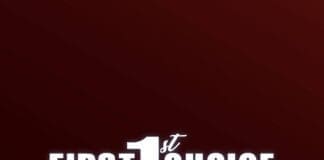The sound of music is a language. Learning to decipher musical notation whether that be traditional staff or chord method enables one to effectively comprehend a message. How often do we read a paragraph and have no idea what we just read? Even if the words were read properly, there was no meaning.
While learning to play an instrument, it is important to put reading first. Reading starts with the smallest sound which is the note itself. In music, we have 7 letters which are A,B,C,D,E,F and G and in the same order as the alphabet! Each letter is assigned a particular sound or tone such that the note “A” always sounds like “A.” Just like when we learn to read English, letters have particular sounds that together form words.
Once we learn how to find our 7 notes on our instrument, then the fun begins! The combinations of notes are endless. We can express just about any thought using notes in a variety of orders and patterns in a poetic form.
Next, we begin to identify certain note combinations that sound good and when blended together communicate a particular feeling or meaning. Like the “Star Wars” theme, where the first 10 notes are all we need to feel the excitement of good triumphing over evil in our vast galaxy. There is a rhythm that happens as the notes are combined, a beat pattern that can make us dance or chill out in a cozy chair. As the notes are combined with the beats, we begin to have even more fun! Creativity soars to new heights.
As we place our notes in certain orders, they form a musical thought, phrase, or sentence. Teachers help the student to identify these phrases within the music they are studying. Just like a sentence, there is a beginning (the capital letter) and an end (which is the period). In music, we use symbols such as a curving line over the notes which groups them together. The notes are placed on staff lines to indicate letter name and where to play them on your instrument.
Why should I bother to learn to read words (or notes), when all I need to do is speak them to communicate? Simply put, a person will not function to their fullest potential, on a daily basis, if they are unable to read and write. The same is with music. Grammar is music theory, words are notes, books are songs. If you are musically illiterate, then your ability to grow is reduced. Besides, reading opens up a whole new world of adventure and possibilities!
Lastly, musicians who are fluent are accomplished. The dynamics of speech play an important part in connotation. The words “I love you” can be said in a variety of ways to express or elicit happiness, sadness, or anger. In music, we call this dynamics, articulation, and phrasing. Loudly played notes are labeled as “forte,” and softly played notes are “piano.” How we annunciate our notes creates a very different feeling such as short bouncy sounds are called “staccato,” suddenly loud notes are “accented,” and smooth connected notes are “legato.” I like staccato because it reminds me of a sneaky fun tip toe motion. How fast or slow we speak/play can imply urgency, excitement, calmness, or a jovial fun feeling. In music, we call that “tempo.” If we play a fast song too slowly, it just doesn’t provide the same meaning or “sound right.”
Next time you hear a musical tune, consider the intention of the music, the highs, the lows, the beginning, the end, note patterns, and the rhythmic patterns that cause your feet to tap, your heart to cry, or your mind to relax. What is the musician trying to say to you? What have you just musically read?
Studio 237 Music Lessons, Santa Rosa Beach, FL is located in Santa Rosa Beach, FL. Our teachers are ready to teach guitar (acoustic, bass, electric), piano, ukulele, drums, voice, song writing, and more. For more information call 850-231-3199 and visit our website at www.Studio237Music.com.





















































